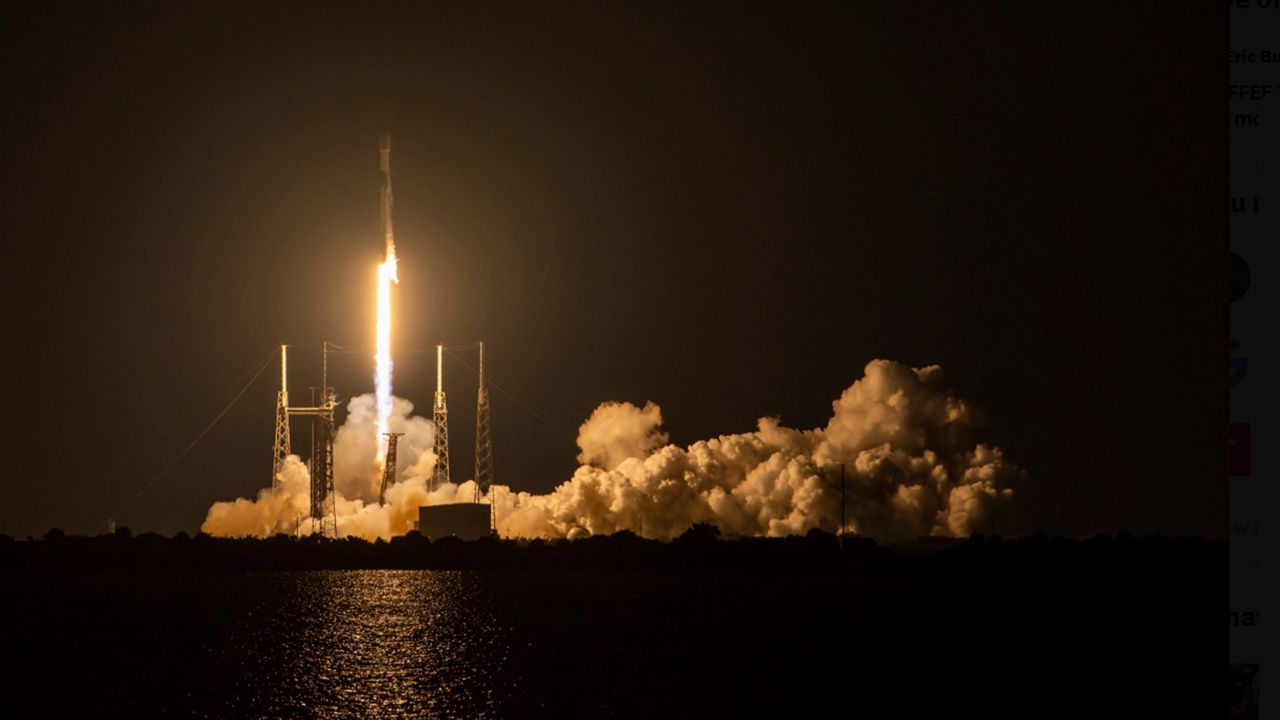CAPE CANAVERAL SPACE FORCE STATION — SpaceX's launch schedule went bicoastal overnight, with Falcon 9 rockets Starlink sending satellites into low-Earth orbit, including mission 10-10 from Space Launch Complex 40 (SLC-40) at Cape Canaveral Space Force Station.
What You Need To Know
- SpaceX pulled off two Starlink launches overnight
- One took off from Cape Canaveral Space Force Station and one took off from Vandenberg Space Force Base in California
- The Brevard launch came at 2:10 a.m. ET, a little more than 14 hours after a Falcon Heavy liftoff from the Space Coast
- Get more space coverage
The launch from Brevard County came at 2:10 a.m. ET Tuesday, just a little more than 14 hours after a SpaceX Falcon Heavy rocket took off from Launch Complex 39A at NASA’s Kennedy Space Center at 12:06 p.m. ET. Monday.
The Brevard County launch early Tuesday carried 23 Starlink satellites to low-Earth and marked SpaceX's 100th launch of 2024, a record for orbital launches by one company in a single year. Monday's Falcon Heavy rocket lifted off on a NASA mission with a satellite that will investigate Europa, Jupiter’s “mysterious moon."
The other Starlink mission overnight lifted off from Space Launch Complex 4 East (SLC-4E) at Vandenberg Space Force Base in California. It was mission 9-20 and carried 20 Starlink satellites, including 13 with direct-to-cell capabilities.
The booster rocket for the Space Force Station launch, B1080-11, was on its 11th flight. Previous launches included Euclid, Axiom-2, Axiom-3, Cygnus NG-21, SES 24, CRS-30 and four other Starlink missions.
After getting the Starlink satellites into space, it landed safely on the droneship A Shortfall of Gravitas in the Atlantic Ocean.
The booster for the California launch, B1071-19, was on its 19th flight. It previously launched NROL-87, NROL-85, SARah-1, SWOT, Transporter-8, Transporter-9, NROL-146, and 11 Starlink missions before Tuesday's.
Minutes after takeoff, it landed safely on the Of Course I Still Love You droneship in the Pacific Ocean.
Harvard-Smithsonian Center for Astrophysics’ Dr. Jonathan McDowell documents Starlink satellites.
Before Tuesday's launches, McDowell recorded the following:
- 6,420 are in orbit
- 6,151 are in operational orbit



